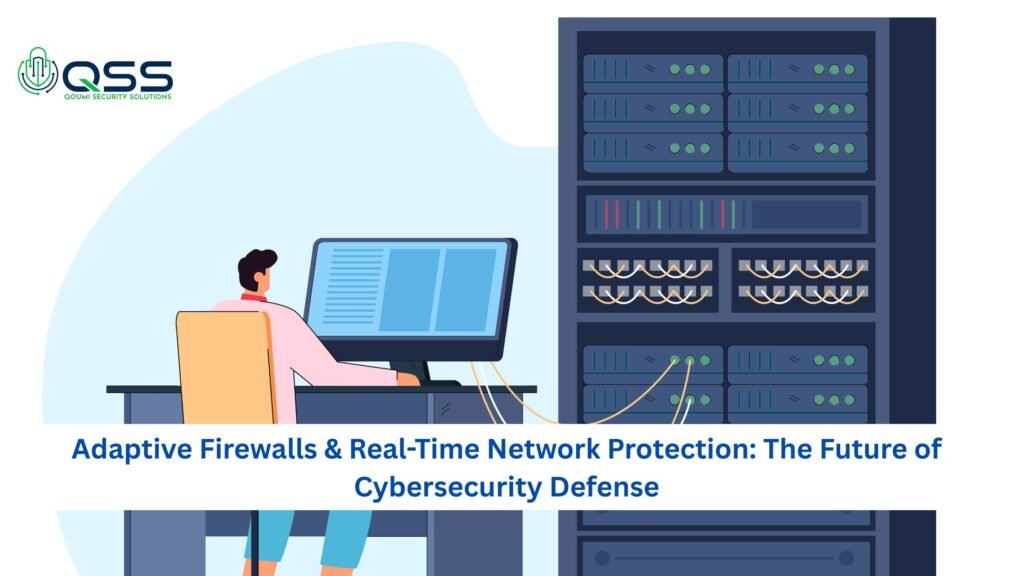Single Blog
Red Team vs. Blue Team: What Every Business Needs to Know
Red Team vs. Blue Team: What Every Business Needs to Know

Hey there, business owner! Let’s talk about something that might sound like it’s straight out of a spy movie but is actually a game-changer for keeping your company safe in the digital world: Red Team vs. Blue Team. If you’re thinking, “Cybersecurity? That’s for big corporations with huge budgets,” stick with me. In 2025, with cyberattacks like ransomware spiking by over 70% last year, every business—yours included—needs to get serious about protection. The best part? You don’t need a million bucks or a tech genius on speed dial to make it happen. Red Team and Blue Team strategies can help you test and strengthen your defenses, and I’m here to break it down in plain, conversational English. Grab a coffee, and let’s dive into what these teams are, why they matter, and how you can use their playbook to keep your business safe.
So, What’s This Red Team vs. Blue Team Thing?
Picture this: your business is a castle. The Red Team is a group of clever “thieves” trying to sneak in, find weak spots, and grab the crown jewels (your data). The Blue Team? They’re your loyal guards, patrolling the walls, locking the gates, and making sure no one gets through. Together, they’re like a practice match to make your castle impenetrable.
- Red Team: These folks play the bad guys. They think like hackers, using real-world tricks like fake emails (phishing), sweet-talking employees (social engineering), or exploiting software glitches to break into your systems. Their job is to find holes in your defenses before the real criminals do.
- Blue Team: These are your defenders. They’re all about keeping the castle secure—monitoring for suspicious activity, updating software, and jumping into action when an attack (real or staged) happens. Think of them as your cybersecurity superheroes.
When these two teams go head-to-head, it’s like a controlled experiment. The Red Team tries to crack your defenses, and the Blue Team fights back, learning from every move. It’s not about one team winning—it’s about making your business stronger. Cool, right?
Why Should Your Business Care?
Let’s get real: cyberattacks are a nightmare. They cost businesses worldwide a jaw-dropping $10.5 trillion a year, and small businesses like yours are often the easiest targets. Why? Because hackers know you might not have fancy security systems or a full-time IT crew. A single breach—say, a hacker stealing customer data or locking your files with ransomware—can cost you tens of thousands, tank your reputation, or even force you to close shop. Ouch.
Here’s the kicker: Red Team vs. Blue Team exercises can help you spot weaknesses before disaster strikes. It’s like hiring a stunt double to take the punches so you don’t have to. By simulating attacks, you learn where your defenses are shaky and how to fix them. Plus, these strategies aren’t just for tech giants—small businesses can use affordable versions to stay safe without breaking the bank.
The Benefits of Red Team vs. Blue Team for Your Business
So, why go through all this trouble? Here’s what you gain:
- Real-World Testing: Red Team attacks mimic actual hackers, so you’re not just guessing what might happen—you’re seeing it in action. This helps you prioritize fixes that matter.
- Stronger Defenses: Blue Team learns to spot and stop threats faster, making your systems tougher to crack.
- Team Confidence: Your employees get hands-on experience handling threats, so they’re less likely to panic in a real crisis.
- Cost Savings: Fixing vulnerabilities before a breach is way cheaper than cleaning up afterward. The average small business breach costs $120,000—prevention is a bargain by comparison.
- Customer Trust: Showing you take security seriously builds loyalty. Customers love knowing their data is safe with you.
Ready to see how you can make this work for your business? Let’s roll up our sleeves and explore some practical ways to bring Red Team and Blue Team vibes to your cybersecurity game.
How to Implement Red Team vs. Blue Team on a Budget
You don’t need a Hollywood budget to pull this off. Here are ten practical, low-cost ways to adopt Red Team and Blue Team strategies, tailored for small businesses in 2025. These tips are inspired by what real companies are doing to stay secure, and they’re designed to be doable, even if tech isn’t your thing.
1. Start with a DIY Risk Checkup
Before you unleash the teams, figure out what you’re protecting. Grab a free cybersecurity framework like the NIST Cybersecurity Framework (it’s online, no cost) and do a quick audit. Ask: What’s our most valuable stuff? Customer info? Financial records? Where are we weakest? Old software? Sloppy passwords? This sets the stage for your Red and Blue Teams to focus on what matters.
2. Build Your Red Team Mindset
You don’t need a full-time hacker squad. Start small: designate an employee or hire a freelancer to play Red Team for a day. Their job? Try to “break in” using common tactics like guessing passwords or sending fake phishing emails. Free tools like Kali Linux can help them test your systems safely. If that’s too techy, just have them call an employee pretending to be IT and ask for login details. You’ll be shocked at what you learn.
3. Empower Your Blue Team Basics
Your Blue Team is everyone who uses your systems—yes, even your non-techy staff. Equip them with free tools like Windows Defender (built into Windows) or Malwarebytes’ free version to scan for threats. Set up automatic software updates to patch vulnerabilities. Make sure someone checks logs (most software has them) for weird activity, like logins at 3 a.m. from another country.
4. Train Everyone to Spot Scams
Over 90% of breaches start with human error, often from phishing emails that look legit. Red Team can test this by sending fake emails to your staff (use free tools like Gophish). Blue Team’s job is to spot the fakes—look for typos, weird sender addresses, or urgent demands. Run short, monthly training sessions using free resources from CISA.gov. It’s like teaching your team to spot a con artist before they get swindled.
5. Lock Down Your Network
Red Team loves weak Wi-Fi. Have them test your network by trying to guess your router password (hint: “admin” won’t cut it). Blue Team can fight back by enabling WPA3 encryption and changing default router settings. If you’ve got remote workers, use a free VPN like ProtonVPN to encrypt their connections. It’s like putting a deadbolt on your digital front door.
6. Test Your Backup Plan
Ransomware is a Red Team favorite—it locks your files and demands payment. Blue Team counters with solid backups. Use free cloud storage like Google Drive (15GB free) or affordable options like Backblaze. Red Team can simulate a ransomware attack (safely!) to see if Blue Team can restore data fast. Follow the 3-2-1 rule: three copies, two different devices, one offsite. Test it quarterly to avoid surprises.
7. Run a Phishing Drill
Phishing is the number one way hackers sneak in. Red Team can use free tools to send mock phishing emails to your staff. Blue Team analyzes who clicks and educates them on red flags, like “Your account is locked!” emails. Free platforms like KnowBe4 offer phishing simulators to make this easy. It’s like a fire drill, but for your inbox.
8. Create a Simple Response Plan
If Red Team “breaches” your systems, Blue Team needs a plan. Write down steps: Who shuts down affected devices? Who calls your lawyer or customers? Free templates from Ready.gov can guide you. Practice once a year to keep everyone sharp. This prep can cut recovery time and costs dramatically.
9. Monitor Access Like a Hawk
Red Team often exploits over-permissive accounts (like giving everyone admin access). Blue Team should use free tools in Google Workspace or Microsoft 365 to limit permissions—only give what’s needed. Check logs monthly for odd logins. Use Have I Been Pwned? to see if your emails are compromised. It’s like checking your credit report, but for cyber risks.
10. Tap into Open-Source Tools
For tech-savvy folks, free open-source tools like Snort (intrusion detection) or ClamAV (antivirus) can level up your game. Red Team can use them to probe for weaknesses, while Blue Team uses them to monitor threats. Online forums like Reddit’s r/cybersecurity offer free advice to get started. Dip your toes in one tool at a time to keep it manageable.
Measuring the Payoff
Here’s the deal: Red Team vs. Blue Team isn’t just about playing cops and robbers—it’s about saving your business from real-world disasters. These exercises cut breach risks by up to 80%, saving you from six-figure losses. They also make your team more confident and your customers more loyal—who doesn’t love a business that keeps their data safe?
Track progress by noting fewer phishing clicks, faster patch times, or smoother recovery drills. If you’ve got a small budget, consider affordable cybersecurity consultants for occasional Red Team tests, but the DIY tips above are a solid start.
Wrapping Up: Your Next Steps
Cybersecurity isn’t just for tech nerds—it’s for anyone who wants their business to thrive in 2025. Red Team vs. Blue Team is like a gym workout for your digital defenses: it’s tough, but it makes you stronger. Start small—pick two or three tips from this list, like a phishing drill or a backup test, and try them this month. Check out free resources from NIST or CISA for more guidance, or join online communities to swap tips with other business owners.
Don’t wait for a hacker to teach you a lesson. Get your Red and Blue Teams rolling, even if it’s just you and a laptop for now. What’s your first move to lock down your business? Let’s make it secure and keep the bad guys out!





